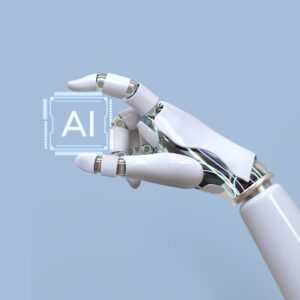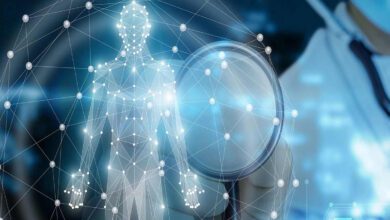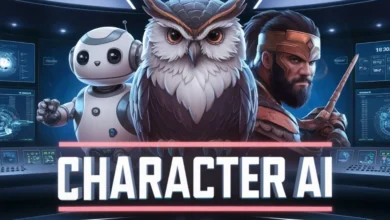
AI is everywhere—including countless applications you’ve likely never heard of
AI is everywhere, whether in automobile industries or healthcare departments. The most valuable tools, like mid-journey and CHATGPT, depend on AI and touch their peak. Unlike in the last few years, AI is now at its peak. Most people also need to be aware of the application of AI in the real world. These applications or tools are only a little used other than an AI Image Generator. As different AI technologies improve, more AI will be used in many

industries. It includes uses such as warfare, healthcare, and customer tech, which is valuable and suitable for people. Here are some widely-rising artificial intelligence applications that you should know about.
AI is everywhere in the Healthcare:
Most AI technologies are already working to improve patient health. Computer programs with artificial intelligence are good at quickly looking through and understanding vast amounts of data. They can do this much faster than a person, or even a whole group, could.
For example, artificial intelligence encourages researchers to comb vast genetic data libraries. Analyzing big data sets lets geneticists focus on genes that might cause different diseases. This feature helps create new tests for diagnosing diseases.
With the help of artificial intelligence, searching for medical treatments is now easy and fast. Selection and testing of treatment of specific diseases can take much time. AI also helps a lot by diagnosing diseases faster and processing the treatments for those diseases.
For instance, the non-profit organization Every Cure in the United States uses artificial intelligence algorithms to search medical databases. They match up existing medications with illnesses they might be helpful for. This method is expected to save a lot of time and resources.
The hidden AIs:
Besides medical research, artificial intelligence is helping other fields that aren’t directly connected to computer science.
At CERN, where the Large Hadron Collider is located, physicists use a newly developed advanced artificial intelligence algorithm. It’s helping them deal with the most challenging parts of analyzing the particle data from their experiments. Last year, astronomers first used AI technology to understand a “potentially hazardous” asteroid- a space rock that might hit the Earth one day.
Nowadays, artificial intelligence is developing in transportation. Hundreds of thousands of flights and trains around the world are controlled by AI. These artificial intelligence systems are used to reduce costs and maximize efficiency.
Artificial intelligence can manage real-time traffic on roads. It does this by studying traffic patterns, how many vehicles are on the road, and other things. Then, it modifies the traffic lights and signals based on its findings. Google Maps and apps like it uses innovative route-finding systems. These systems help them pick the best way to get from one place to another.
Artificial intelligence is used in many everyday items, too. For example, robot vacuum cleaners have software with artificial intelligence. This software helps them understand what their sensors find and move around their homes quickly. The newest cars use AI in their suspension systems. It allows people in the car to have a comfortable ride without bumps.
Indeed, there are plenty of exciting uses for AI. For instance, a few years ago, a brewery startup, IntelligentX, in the UK, called IntelligentX, used AI to create personalized beers for its customers. Additionally, other breweries are using AI to improve how they make beer.
Chatbots:
You may have talked with lots of chatbots online. You may not know that most or all of these bots are AI. They are not just basic rule systems anymore; they are now advanced chat agents. One great example is ChatGPT, which OpenAI made.
Chatbots can understand what people are asking about. This is because of advanced technologies like natural language processing and machine learning algorithms. Chatbots can give personalized answers. They can help with complex tasks, too. Chatbots also learn from people to get better over time.
Companies and app makers add chatbots to make talking to people more engaging. For example, chatbots in customer service help all the time by fixing issues fast and making customers feel suitable.
Plus, with sentiment analysis, chatbots can understand how users feel and give responses that match their emotions.
Entertainment Streaming Apps
Extensive streaming services like Netflix, Spotify, and Hulu keep giving data to machine learning algorithms. They do this to make sure users have a smooth experience.
These streaming apps pay close attention to how users engage with different media. They suggest personalized content by analyzing the growing amount of user data. With AI, these apps build collections of music, films, and TV shows tailored to each user’s preferences.
AI is vital for keeping streaming uninterrupted. It does this by automatically choosing the closest servers to the user. It also adjusts the amount of data sent depending on how popular a particular media piece is.
Personalized Marketing
Companies use tools with AI that use customer information to get more customer interaction. A study from OneSpot Research found that 88% of people asked said they feel better about a brand when they see content made just for them.
Shoppers buy more when ads are custom for them. AI looks at pictures to see how good ads are. It helps companies show people ads for things they want. AI apps also help new customers and returning customers.
AI also lets companies make logos with online logo creators that their audience will like. It shows them which parts of logos will work well for their customers or correctly display what they offer and sell.
Image Recognition through Google Lens
Google Lens can now do more than recognize pictures. With help from AI, it can identify objects, places, and words in images. Google Lens also uses OCR technology. This lets users select and interact with text from pictures.
Here is a simplified example: Google Lens can translate text in other languages instantly when you point your camera at a sign. It keeps the original meaning. Google Lens shows it can read text when you take a picture of a business card. It reads the words and suggests saving it as a contact.
Social Media Algorithms
For sure! Places like Instagram, Facebook, and YouTube use computer programs to make your time on them more suited for you and intriguing. The programs watch what you press “like” on, share, or comment. Then they utilize this data to present things you may enjoy, propose new links, and exhibit promotions that coordinate your interests.
Furthermore, machine learning models help protect the platform by spotting and removing inappropriate content. These algorithms keep learning, so their recommendations adjust as your interests change.
Smart Input Keyboards
New mobile keyboard apps have improved features like autocorrect and language detection to make typing easier.
Using AI, these apps fix errors, help switch between languages, and predict the next word without bothering you.
AI programmers use the “random forest” machine learning algorithm to teach these apps to understand what you’re typing and make better guesses.
Frequent Asked Questions (FAQ’s)
Is AI used everywhere?
Yes, AI is everywhere
How many applications of artificial intelligence are there?
In transportation, AI is helping create self-driving cars and enhance traffic control. In energy, AI is aiding in making energy use more efficient and forecasting energy needs. In government, AI improves public safety, identifies crime, and delivers services to citizens.
Why is AI widely used?
Artificial Intelligence makes humans work faster. In banks and other financial organizations, AI methods can spot possible transaction fraud, quickly and accurately assess credit, and handle data tasks that would otherwise take much time and effort.
Why is AI everywhere now?
Computer programs that use artificial intelligence are good at sorting through and studying massive data sets much faster than a person, or even a group of people, could do. For instance, AI helps scientists search through vast libraries of genetic data.
Where is AI used today?
Today, AI is used in various fields like finance and healthcare. Simple AI, called weak AI, focuses on one task. In contrast, strong AI handles more complicated tasks, almost like a human would. Some people worry that using advanced AI a lot could harm society.



